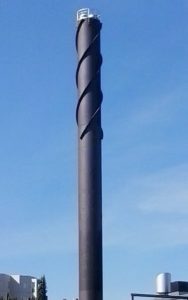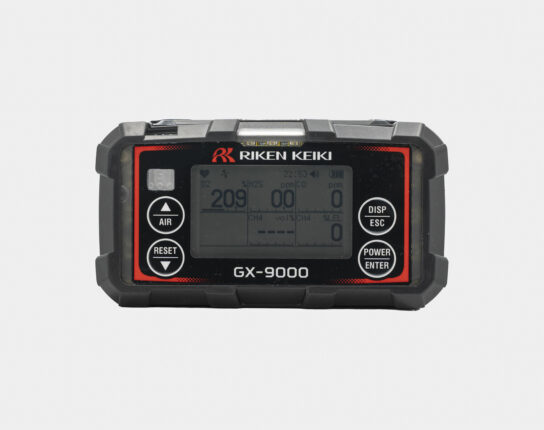
Reduce vibrations with the ScrutonWell® thermowells
When a thermowell is installed into a flowing liquid or gas, the inserted stem will cause a Kármán vortex street to form. Because the vortices cause the thermowell to resonate, this may harm the stability and integrity of the instrument or the installation. So how can you make sure that these vortices are less of an issue?
The idea of the Scruton helix design
Cristopher Scruton had a similar problem in 1963. He was asked to come up with a solution for the wind affecting structures such as industrial chimneys. He figured out that any shape would cause a vortex, but that the vortex could be split into smaller vortices by attaching helical strakes to a circular shape. In the example below you can see how this is applied to the chimney of an industrial plant.

How is this design applied to the thermowell?
A thermowell is most often used to measure temperature in a setting where the insert reaches into the liquid or gas flowing through the process. This flow can be compared to the wind hitting a chimney in the above example, where the flow will cause a Kármán vortex street if the cylinder would be smooth. By incorporating the helix onto the outside of the thermowell, the Scrutonwell® design reduces oscillation by up to 90%. The design also means that installation is the same as with a regular thermowell, with no special installation knowledge required. The design can also be applied to any of the standard types of thermowells when the expected oscillation cannot be solved by shortening or widening the thermowell insert due to space limitations or minimum insert length requirements. We will explain a little more about this in the next section.
When do you use the Scrutonwell® design?
When industrial flow processes are designed, there will be an extensive list of requirements to be checked to ensure that the process will be efficient, durable and reliable. One of the calculations that has become standard practice is the thermowell wake calculation per ASME PTC 19.3 TW-2016. The results of this calculation indicate whether the thermowell will endure the conditions in which it is installed. Part of this calculation is the degree to which the thermowell will be exposed to the Kármán vortex street. As mentioned earlier, the initial results can be improved by widening or shortening the insert, as this also increases the thermowell’s resistance. But when that is not enough or simply not possible due to size limitations, the helix design becomes the most viable option.
WIKA has made a great informational video on the wake frequency calculations, so be sure to check that out for more information about the process. As the manufacturer of the Scrutonwell® thermowells, they have also made another great video explaining the development of the Scrutonwell® designs.
For more information about the available variations we offer you can check out WIKAs website or take a look at our Thermowell product range.
For more background information about the Scruton Helix and the original patent Cristopher Scruton applied for in 1963 you can check out this wiki, this paper on helical chimneys in Spain and this technical analysis of the same application on chimneys.
We hope this informational blog has interested you and shed some light on the innovative design of the Scrutonwell® thermowells.
Related
More of the same



